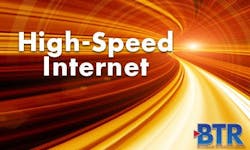FCC Chairman Ajit Pai has proposed providing additional opportunities for unlicensed TV white space devices to deliver wireless broadband services in rural areas. Such devices operate in portions of the broadcast TV bands (channels 2-35) and spectrum not being used for authorized services. Pai is seeking to spur the continued growth of such devices to provide broadband service to rural and underserved communities. The FCC will vote on the proposal at the commission's monthly Open Meeting on Feb. 28.
"TV white spaces can play a critical role in providing broadband services to rural and underserved areas," said Pai. "I saw the promise of this technology in South Boston, a town in rural Virginia, where I met a student who said getting Internet access in his home was a game-changer. The FCC has taken steps to enable the use of white spaces over the years, and this new proposal would further help bridge the digital divide while protecting TV stations."
Specifically, Pai is proposing to permit higher transmit power and higher antennas for fixed wireless white space devices in rural areas. If adopted, the changes would allow white space devices to reach users at greater distances, thus enabling improved broadband coverage. Higher power would also enable signals to better penetrate foliage, buildings, and other obstacles. Additionally, the proposal would permit higher power mobile operations within geo-fenced areas and propose rule revisions to facilitate the development of new narrowband Internet of Things (IoT)-based services.
Because white space device operations must protect other authorized services from interference, Pai is also proposing to increase the minimum required separation distances for white space devices operating at higher power.
If the Notice of Proposed Rulemaking is adopted on Feb. 28, the public will have the opportunity to provide feedback prior to the commission adopting final rules.
